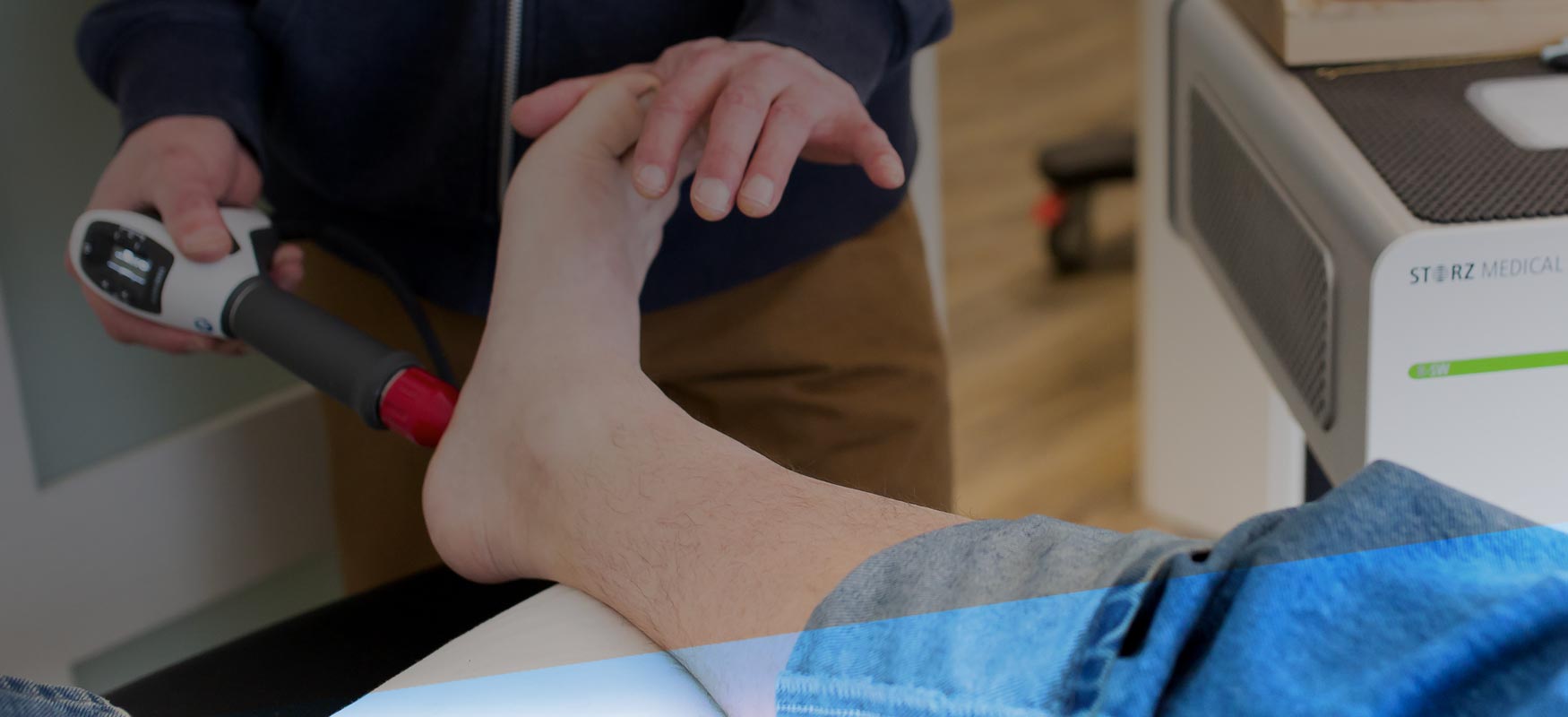The first thing you should probably know is what shockwave therapy actually is. Shockwave therapy has become an increasingly popular treatment modality used by physiotherapists and its most common use is for chronic (older than 3 months) tendon injuries. We call these injuries to the tendon a tendinopathy.
- Rotator cuff tendinopathy,
- Tennis elbow,
- Achilles tendinopathy,
- Patellar tendinopathy and
- Plantar fasciitis
One reason tendon pain can last longer than we like is because this particular type of tissue does not receive as much blood flow as others (e.g. muscle). When it comes to healing and regenerating tissue, this lack of blood flow can be a problem and is aided by shockwave.
HOW DOES IT WORK?
Shockwave therapy is a modality that creates sound pulse waves that travel through the skin to the site of injury. These high intensity mechanical waves, (that are not electrical like many think when they hear the word “shock”) cause a disturbance to the affected area resulting in an inflammatory response. This may sound counterintuitive, but because the injured tendon tissue has poor blood flow—among other things—this inflammatory response triggers blood vessel formation, thus improving nutrition and providing the environment for an improved healing response and ultimately, improved strength of new tissue.
Another impressive use for Shockwave therapy is to break up calcification within tendons. Many times calcium deposits are found in tendons, especially the tendons of the rotator cuff muscles. These deposits are often found right where a patient is having pain and can be seen on ultrasound imaging or x-rays. Breaking it up with shockwave has shown to decrease pain and even fully rid the tendon of the calcium deposit. This could be the thing preventing
Another great use for shockwave therapy is that it can be used to help release tight muscles throughout the body. Focusing the shockwave therapy on trigger points might just be the thing that finally gets it to release.

HOW LONG DOES IT TAKE TO WORK?
For optimal results, typically 3-5 sessions of shockwave are required, with 7-10 days between each session. As with most injuries, it is important for you and your physiotherapist to identify the root cause of the problem. Shockwave therapy can be a highly effective treatment for restoring the health of the tendon and decreasing pain, but if the original aggravating factor has not be addressed (e.g. calf weakness or repetitive loading), it is likely that the same problem will recur. Early intervention is the best way to quick recovery. Often, the longer the tendon pain has been going on, the longer it takes to fix.
If you have more questions about what to expect with Shockwave, or whether it is right for you, call to book with one of our physiotherapists today!
—
This blog was written by one of our talented physiotherapists, Riley Bay. If you need some help with your knee injury and are looking for a great physio click here to book with her or if you want to know more, take a look at her bio by clicking here to see if she would be the right fit.



